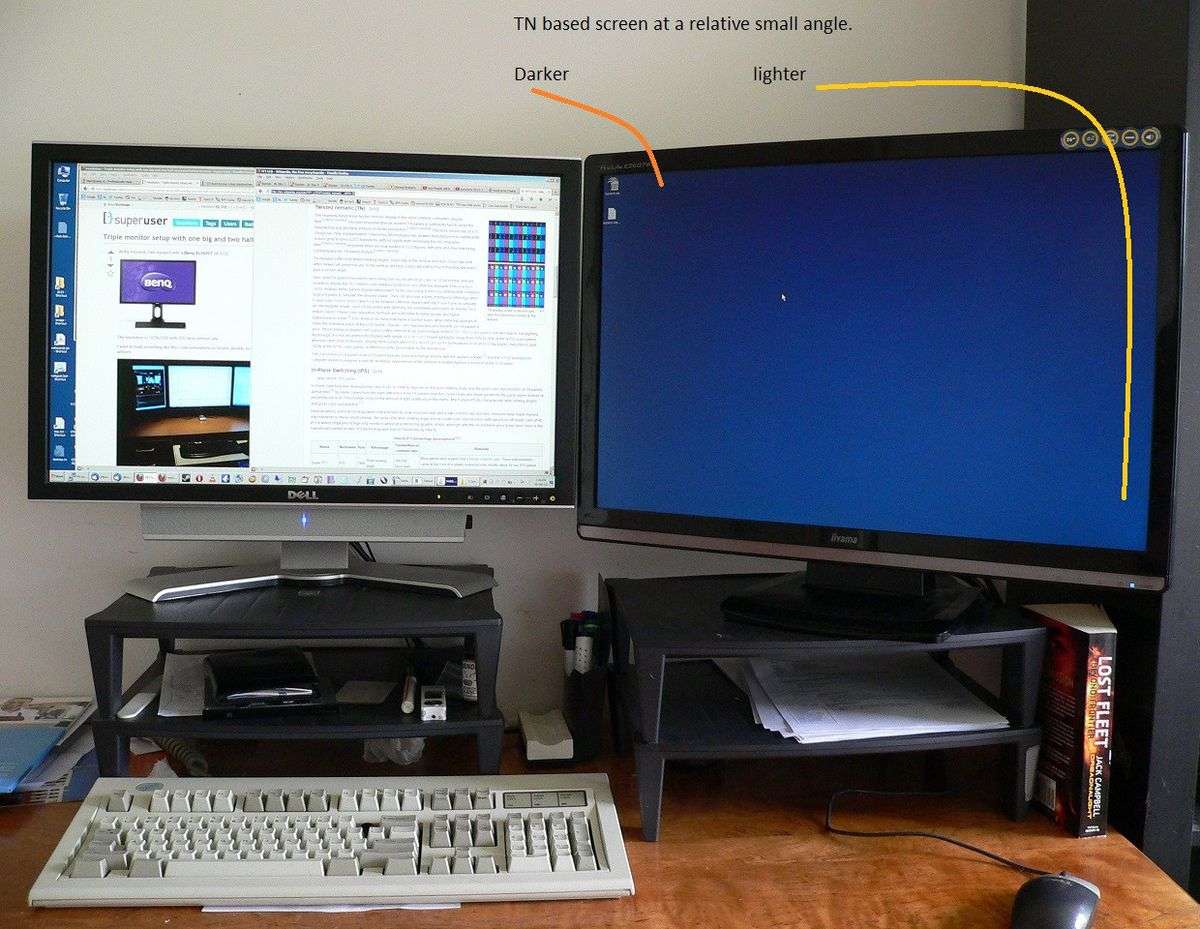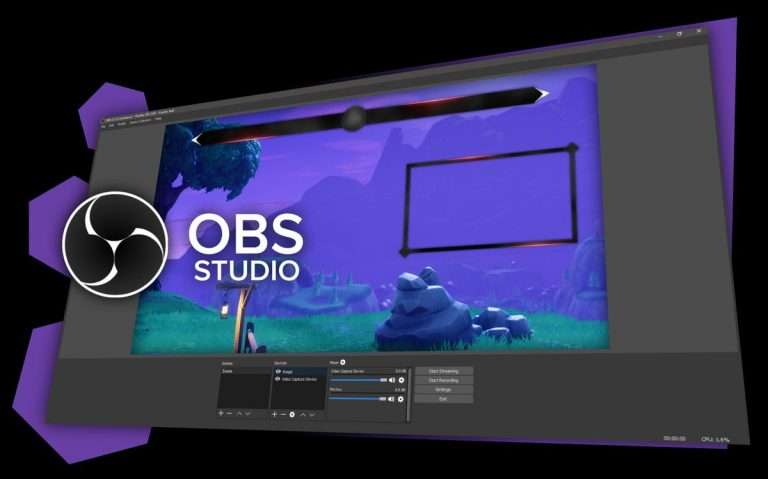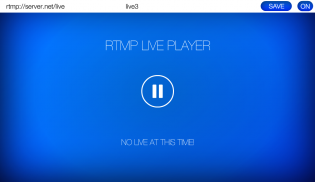Simulcast Streaming: How to Use Multistreaming to Broadcast from Multiple Locations
Simulcast streaming, or multistreaming, has revolutionized the way content creators and broadcasters reach their audiences by allowing them to stream to multiple platforms simultaneously. This comprehensive guide will walk you through the process of using simulcast software to broadcast from various locations, ensuring your message has the maximum impact. We’ll explore the advantages of simulcasting, how to choose the right software, and the technical setup involved. Additionally, we’ll delve into strategies for maximizing reach, monetizing your streams, and navigating potential challenges to help you elevate your simulcast with advanced techniques and analytics.
Key Takeaways
- Simulcast streaming enables content creators to broadcast live content across multiple online platforms at once, expanding their reach and engagement.
- Choosing the right simulcast software is crucial and depends on the specific platforms you wish to target and the features you need for your broadcast.
- Technical setup for simulcasting involves understanding the software’s capabilities, preparing content for various platforms, and ensuring a stable streaming environment.
- Multistreaming offers monetization opportunities and the ability to maintain stream quality across platforms, but it also requires managing technical difficulties and viewer engagement.
- Advanced simulcasting techniques include using interactive elements, leveraging social media integration, and analyzing performance metrics to refine broadcasting strategies.
Unlocking the Potential of Simulcast Streaming

What Is Simulcast Software?
Have you ever wondered what is a simulcast and how it can amplify your online presence? Simulcast software is your gateway to simulcast streaming, allowing you to broadcast your content across multiple platforms simultaneously. Imagine sharing your live event not just on one channel, but on several, reaching diverse audiences wherever they prefer to engage. That’s the power of simulcast streaming.
What is simulcasting online, you ask? It’s the strategy of using a simulcast stream to maximize your content’s reach and impact. By leveraging simulcast software, you can ensure that your message resonates across various social media landscapes, all at once. Here’s a quick rundown of what simulcasting entails:
- Broadcasting live: Your content goes live on multiple platforms at the same time.
- Engagement: Interact with a broader audience by being present on their preferred platforms.
- Convenience: Manage your streams from a single dashboard, simplifying the streaming process.
So, what does simulcast mean for you as a creator? It means more eyes on your content, more engagement, and the potential for a significantly amplified online presence. Choosing the right simulcast software is crucial, as it should align with your goals and the platforms that matter most to you and your audience.
The Advantages of Simulcasting Online
Imagine reaching more eyes and ears than ever before, simply by tapping into the power of simulcasting. Broadcasting your live stream across multiple social channels simultaneously opens up a world of possibilities. You’re not just going live; you’re going viral by expanding your audience across diverse platforms.
With simulcasting, you’re not putting all your eggs in one basket. If one platform experiences technical difficulties, your stream isn’t ruined—it’s still thriving elsewhere. This redundancy is a safety net that ensures your content remains accessible, no matter what.
Here’s a quick look at some of the benefits you’ll enjoy:
- Increased viewership and reach
- New monetization opportunities
- Protection against platform-specific issues
- Greater recognition within your industry or niche
By embracing simulcasting, you’re not just broadcasting; you’re creating a multifaceted presence that resonates with viewers wherever they are. It’s a strategy that not only grows your viewership but also fortifies your brand against the unexpected.
Choosing the Right Simulcasting Software
When you’re ready to take the plunge into simulcasting, selecting the right software is crucial. Your choice should align with your streaming goals and the platforms you aim to reach. Not all simulcasting software supports every social sharing site, so it’s essential to verify compatibility.
Ease of use is another significant factor. You want software that simplifies the process, allowing you to go live on multiple platforms with just a few clicks. Look for services that offer additional features to enhance your broadcasts, such as customization options and interactive tools.
Here’s a quick checklist to help you evaluate potential simulcasting software:
- Compatibility with your target platforms
- User-friendly interface
- Customization features
- Interactive tools for audience engagement
- Reliable customer support
Remember, the best simulcasting software for you is the one that meets your specific needs. For a comprehensive comparison, consider checking out resources like “The 10 Best Multistreaming Platforms in 2024: A Comparison – Dacast,” which can guide you in making an informed decision.
Setting the Stage for Multistreaming Success

Understanding How Simulcasting Works
At its core, simulcasting is about amplifying your message by broadcasting it across various platforms simultaneously. Imagine your live event reaching viewers on YouTube, Facebook, and Twitch at the same time. This is the power of simulcast streaming. It’s a strategy that leverages the real-time messaging protocol (RTMP) to synchronize your content’s transmission, ensuring that no matter where your audience prefers to tune in, they won’t miss a beat.
To get started, you’ll need to choose a method that aligns with your technical skills and the time you’re willing to invest. Here’s a simplified breakdown of the options:
- Direct streaming through RTMP servers
- Using dedicated simulcasting software
- Integrating with a streaming platform’s native multistreaming feature
Each method has its nuances, but they all serve the same purpose: to expand your reach and engage with viewers across multiple channels. Remember, the goal is to make your content accessible and consistent, no matter the platform. As you explore the world of simulcast streaming, you’ll discover its numerous benefits, from increased visibility to the potential for a more diverse and engaged audience.
Preparing Your Content for Multiple Platforms
When you’re gearing up to broadcast your content across various platforms, it’s crucial to understand the power of simulcasting. You’ll save precious time by streaming and recording once, making your content instantly available in multiple places. This efficiency means you can focus more on quality rather than juggling uploads and downloads for each site.
Simulcasting isn’t just about reaching a wider audience; it’s also a learning opportunity. Each platform offers unique analytics, allowing you to see what resonates with your audience where. By analyzing performance across different sites, you can tailor your content to maximize engagement and connection.
Remember, the goal is to broadcast simultaneously to as many online platforms as possible. Services and software designed for simulcasting make it easy to go live on major social sites with just a few clicks. Here’s a quick checklist to ensure you’re set for multistreaming success:
- Streamline your technical setup for easy broadcasting
- Analyze and learn from each platform’s analytics
- Expand your presence by creating accounts on new platforms
- Encourage followers to join you across all your broadcasting channels
By following these steps, you’ll not only get more views but also create a robust online presence that leverages the full potential of simulcasting.
Technical Setup: A Step-by-Step Guide
Now that you’re ready to dive into the world of simulcast streaming, let’s get your technical setup squared away. First things first, you’ll need to choose your broadcasting software. This is the backbone of your stream, allowing you to manage and send your broadcast to multiple platforms simultaneously.
Once you’ve selected your software, it’s time to configure the platforms you want to multistream on. You’ll need to add the RTMP Server and RTMP Key for each platform. This might sound technical, but it’s essentially just copying and pasting information from your streaming platform to your broadcasting software. Here’s a simple breakdown:
- Choose your broadcasting software
- Add the RTMP Server for each platform
- Insert the RTMP Key for each platform
And that’s it! With these steps, you’re all set to start streaming to your audience, wherever they are. Remember, the key to a successful simulcast is preparation and testing. So, take the time to ensure everything is working smoothly before you go live. Have fun and happy streaming!
Maximizing Reach with Multistreaming

Expanding Your Audience Through Simulcasting
The power of simulcasting lies in its ability to cast a wide net across the digital landscape. By broadcasting your content simultaneously on multiple platforms, you’re not just hoping for viewers to stumble upon your stream; you’re actively placing it in their line of sight. This strategy is a game-changer for growing your viewership with minimal additional effort.
Simulcasting means you’re no longer confined to a single platform’s audience. Imagine the impact of going live on YouTube, Twitch, and Facebook at the same time. Each platform has its unique user base, and by tapping into all of them, you’re maximizing your reach. Here’s a simple list to help you visualize the potential growth:
- YouTube: Diverse demographics with a vast global reach
- Twitch: Gaming and creative content enthusiasts
- Facebook: A mix of age groups, perfect for community-based engagement
By engaging with viewers more easily through integrated chat services, you’re not just broadcasting; you’re creating a community. This level of interaction is crucial for maintaining and expanding your audience. Remember, the goal is to make your viewers feel heard and valued, no matter where they’re tuning in from.
Leveraging Social Media Platforms
When you’re ready to take your simulcast streaming to the next level, remember that social media is your ally. Broadcast simultaneously to as many online platforms as possible to maximize your visibility. Services like Restream Studio make it a breeze to hit Facebook, YouTube, LinkedIn, and Twitter all at once, boosting your chances of catching viewers right where they love to hang out.
Don’t just stop at broadcasting; promote your stream across all your social channels. Tweet, share stories, and even consider paid promotions to drum up excitement. Each platform offers unique analytics, so learn from them and tailor your content for each audience. For instance, while some content thrives on YouTube, it might need tweaking for Instagram.
Here’s a quick checklist to ensure you’re leveraging social media effectively:
- Share links to your stream on all social media accounts
- Engage with followers and encourage them to join you on new platforms
- Analyze the performance of your content across different sites
- Use insights to refine your strategy and connect more deeply with your audience
Monetization Strategies for Multistream Broadcasts
When you’re broadcasting to multiple platforms, you’re not just expanding your reach; you’re also opening up new avenues for revenue. Monetizing your multistreaming efforts can be as straightforward as incorporating advertisements or seeking sponsorships. Imagine partnering with brands that resonate with your content and audience, displaying ads that add value rather than distract.
Multistreaming isn’t just about reaching more viewers; it’s about engaging them in ways that can be profitable. Consider offering exclusive content or perks to subscribers across different platforms. You could also implement a tipping system, where viewers can show their appreciation directly. This not only supports your stream financially but also fosters a sense of community and gratitude.
Here’s a quick rundown of potential monetization strategies:
- Partner with brands for advertisements and sponsorships
- Offer exclusive content or perks to subscribers
- Set up a tipping system for viewer contributions
- Conduct giveaways, quizzes, or provide discounts to engage and reward viewers
Remember, the key to successful monetization is to maintain the quality and integrity of your content. Your audience is there for what you create, so any monetization effort should enhance, not detract from, their experience.
Navigating the Challenges of Simulcast Streaming

Managing Technical Difficulties
When you’re in the thick of a live simulcast, the last thing you want is for technical issues to disrupt your broadcast. Always be prepared for the unexpected. Start by understanding your equipment and the specifications of your simulcasting software. If you’re not technical, consider having someone on your team who is.
Remember, practice makes perfect. Run through your content and test your setup before going live. This can help you identify and fix potential problems ahead of time. During the event, keep an eye on your simulcasts to monitor video and audio quality. If issues arise, many professional streaming platforms offer 24/7 technical support, which can be a lifesaver compared to platforms with limited support.
Here’s a quick checklist to manage technical difficulties:
- Know your equipment and software limitations
- Conduct a test run before the event
- Monitor streams constantly during the event
- Have technical support on standby
By staying vigilant and prepared, you can swiftly address any hiccups and keep your audience engaged.
Ensuring Stream Quality Across Platforms
When you’re broadcasting to multiple locations, maintaining a consistent stream quality is crucial. You want your viewers to have a seamless experience, whether they’re watching on a desktop or a mobile device. To achieve this, start by selecting a robust online video platform equipped with the necessary software to facilitate streaming across multiple channels.
Keep an eye on emerging streaming protocols like SRT and WebRTC, which support higher-quality live streaming. Although they’re not widely supported yet, they’re worth considering for future-proofing your setup. Additionally, ensure your service offers adaptive bitrate streaming technology, which automatically adjusts the stream’s bitrate based on the viewer’s internet speed, minimizing buffering issues.
Here’s a quick checklist to help you maintain stream quality:
- Invest in a stable internet connection with a fast upload speed.
- Choose a platform that integrates multistreaming/simulcasting capabilities.
- Look for compatibility with broadcasting software, supported switchers, and mobile streaming support.
- Consider the potential of new streaming protocols for enhanced quality.
Balancing Engagement on Multiple Channels
When you’re broadcasting across various platforms, it’s crucial to keep your audience engaged wherever they are. Engaging with viewers effectively is essential to maintaining and growing your viewership. Many simulcasting services consolidate chats from platforms like YouTube, Twitch, and Facebook into one interface, making it easier for you to connect with your audience without the hassle of juggling multiple chat windows.
Simulcasting doesn’t mean you should spread yourself thin. The key is working out which platforms the majority of your audience is engaging with regularly, and focus your efforts on those. Here’s a simple list to help you balance engagement:
- Use centralized chat management tools to maintain a consistent presence across channels.
- Analyze the performance of your content on each platform to tailor your engagement strategies.
- Prioritize platforms where your content performs best and your audience is most active.
Remember, each platform has its unique set of analytics and tools. Use these insights to improve your content and find better ways to connect with viewers. By learning from each platform, you can refine your approach to ensure quality engagement across all channels.
Elevating Your Simulcast with Advanced Techniques

Innovative Features of Simulcasting Services
As you dive into the world of simulcasting, you’ll discover a suite of innovative features designed to enhance your broadcasting experience. Simulcasting services have evolved to offer more than just the ability to stream to multiple platforms simultaneously. For instance, features like Restream Studio allow you to manage your live videos with ease, providing tools for branding, guest interviews, and screen sharing.
Another key aspect is the ‘Upload & Stream’ functionality, which enables you to broadcast pre-recorded content as if it were live, ensuring you can maintain a consistent streaming schedule. The integrated ‘Chat’ feature also stands out, consolidating messages from all platforms into one place, making it simpler to engage with your audience.
Here’s a quick look at some of the tools and features that can take your simulcast to the next level:
- Restream Studio: A comprehensive tool for live video management
- Upload & Stream: Schedule and stream pre-recorded videos
- Chat: Aggregate messages from various platforms for easy interaction
- Multistreaming: Broadcast to multiple social media platforms with a few clicks
By leveraging these features, you can create a more professional and interactive live streaming experience, ultimately expanding your audience and opening up new monetization opportunities.
Interactive Elements to Engage Viewers
In the world of simulcast streaming, interactivity is the golden key to unlocking a memorable viewer experience. Engage with your viewers in real-time by incorporating two-way conversations. Listen to their comments, acknowledge their presence, and make them feel heard. This not only builds a loyal community but also adds a personal touch that can’t be replicated in pre-recorded content.
Interactive live stream elements can transform your broadcast from a one-sided presentation to a vibrant, participatory event. Here are a few ways to enhance viewer engagement:
- Q&A Sessions: Encourage viewers to ask questions and provide real-time answers.
- Live Polls: Gauge audience opinions and preferences on the fly.
- Chat Rooms: Foster a sense of community among viewers.
- Virtual Networking: Allow viewers to connect with each other.
- Giveaways and Quizzes: Offer rewards that create buzz and incentivize participation.
Remember, engaging with viewers effectively is not just about keeping them entertained; it’s about creating a shared experience that resonates on a deeper level. By using these interactive elements, you ensure that your audience is not just watching, but actively participating in your simulcast.
Analyzing Performance: Metrics That Matter
Once your simulcast is over, it’s crucial to dive into the analytics to understand the impact of your broadcast. Metrics are your roadmap to improvement, guiding you on what worked and what didn’t. With tools like Restream Analytics, you can track average viewership, message counts, and identify peak moments—valuable insights for refining your future streaming strategy.
Every platform offers unique analytics, and simulcasting allows you to compare these side by side. For instance, content that resonates on YouTube might not have the same effect on Facebook. By analyzing platform-specific data, you can tailor your content to better connect with your audience on each channel.
Here’s a quick look at some key metrics to monitor:
| Metric | Description |
|---|---|
| Average Viewers | The number of viewers who watch your stream on average. |
| Peak Moments | Times when viewership spikes, indicating high engagement. |
| Message Count | The volume of viewer interactions during your stream. |
Remember, integrating with a comprehensive tool like Google Analytics can provide deeper insights into your audience demographics and behavior. Use these metrics to fine-tune your approach and maximize the effectiveness of your simulcast streams.
Wrapping Up Simulcast Streaming
As we’ve explored throughout this article, simulcast streaming is a powerful tool for content creators looking to expand their reach and engage with audiences across multiple platforms. By leveraging the right simulcasting software, you can effortlessly broadcast your live content from various locations to your preferred social sites, all at once. Whether you’re a seasoned broadcaster or just starting out, the benefits of simulcasting—such as increased viewership, enhanced engagement, and redundancy against technical issues—are too significant to ignore. Remember to choose the software that aligns with your needs and to utilize the best practices we’ve discussed. Happy streaming, and may your broadcasts reach every corner of the digital world!
Frequently Asked Questions
What is simulcast software?
Simulcast software is a type of streaming program that allows you to broadcast your content live across multiple platforms simultaneously. It automates the process of encoding and transcoding, making it easier to reach a wider audience without the need for multiple streams.
How does simulcasting work?
Simulcasting works by using software or services that stream your live content to various social platforms at the same time. This can be done with a few clicks, and some services offer additional features to enhance your broadcast experience.
What are the benefits of simulcasting online?
Simulcasting online expands your audience reach by broadcasting to multiple platforms simultaneously. It also offers new monetization opportunities and can protect your stream from being disrupted by technical issues on a single platform.
How can I live stream on multiple platforms at once?
You can live stream on multiple platforms at once by using simulcasting software. These programs provide the capability to stream to various social sites easily, and some even offer share codes to direct viewers from social media to your main broadcast.
What should I consider when choosing simulcasting software?
When choosing simulcasting software, consider whether it supports the platforms you want to stream to, its ease of use, the features it offers, and how it aligns with your technical abilities and the time you’re willing to commit to setting up your broadcast.
Can simulcasting help with technical difficulties during a live stream?
Yes, simulcasting can help mitigate the impact of technical difficulties by distributing your live stream across multiple platforms. If one platform experiences issues, your content remains accessible on others, reducing the risk of losing your entire audience due to a single point of failure.







